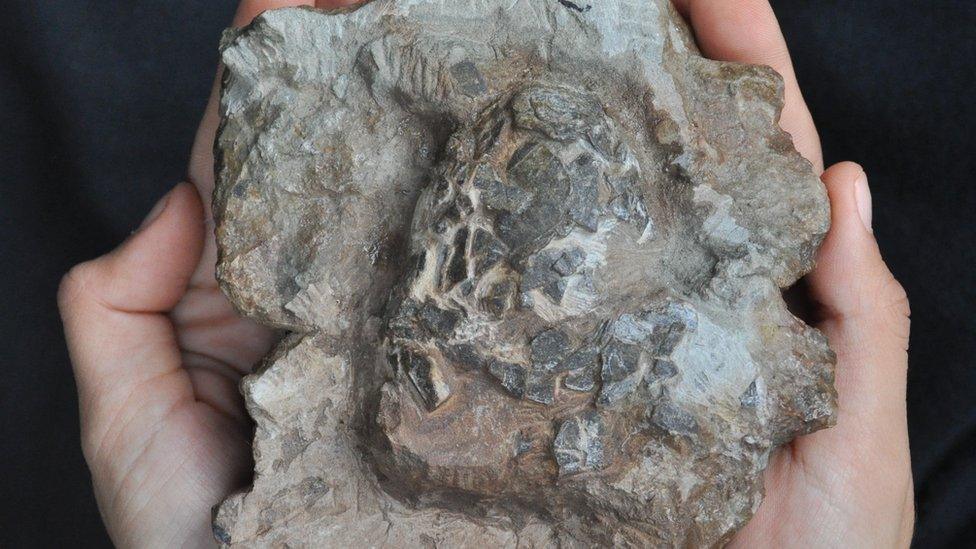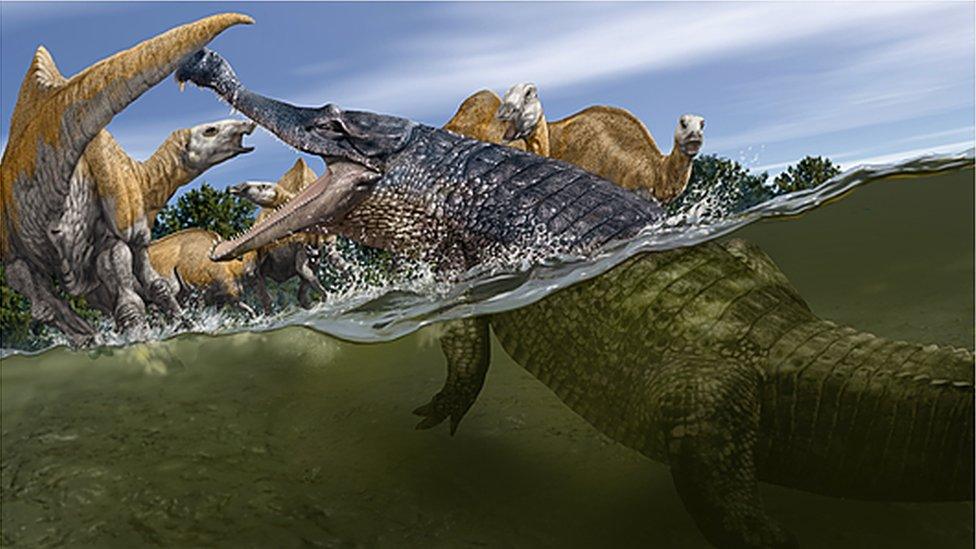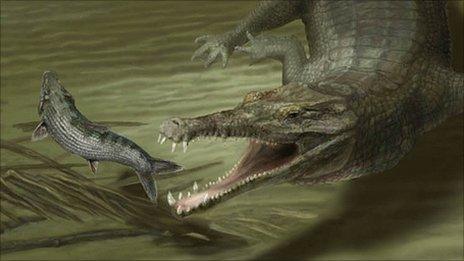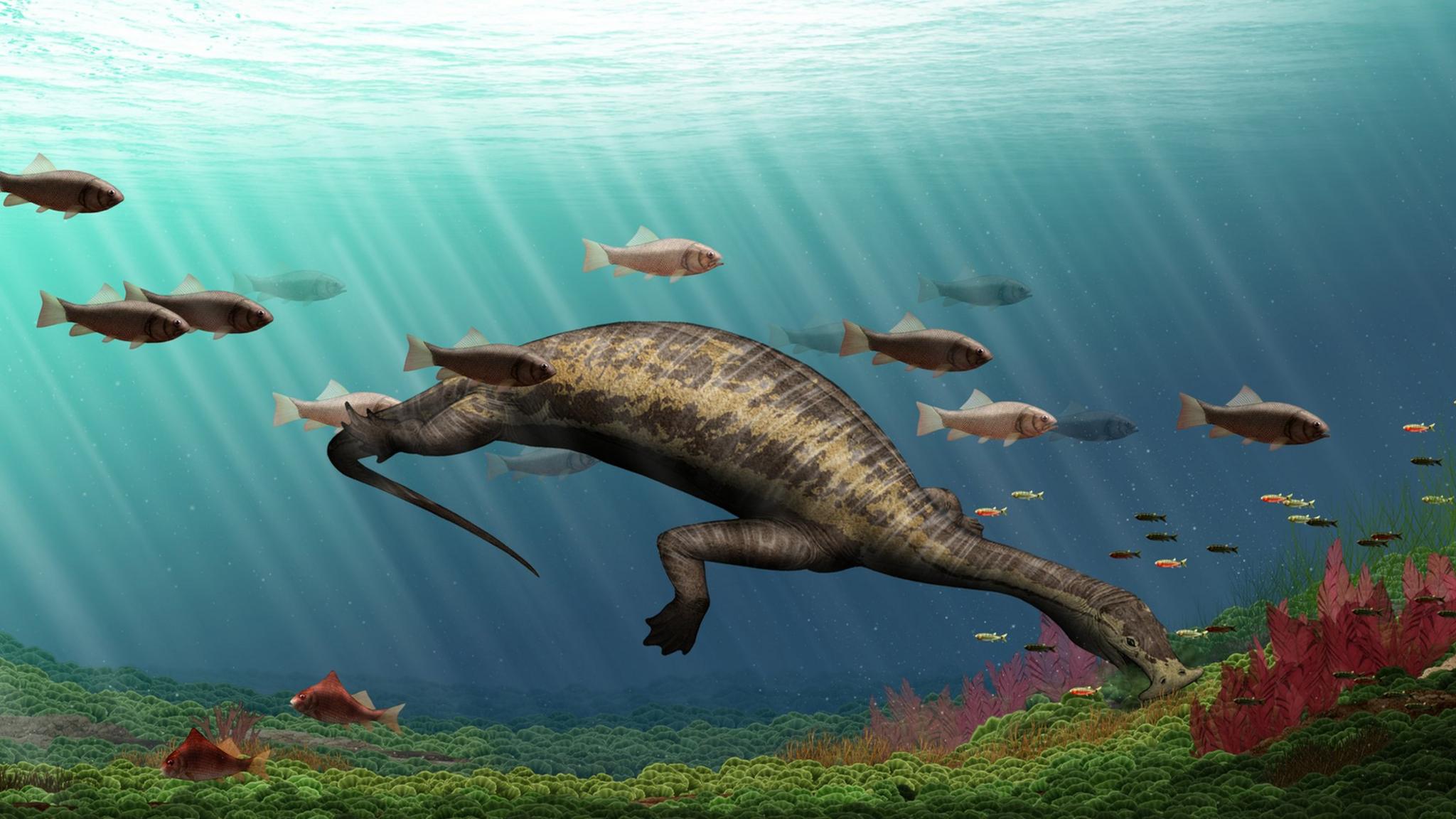Oldest croc eggs discovered in dinosaur nest
- Published

The crocodilian eggs are remarkably well preserved
The oldest crocodilian eggs known to science have been discovered in the cliffs of western Portugal.
They are so well preserved that they give an insight into the "mother croc" that laid them 152 million years ago.
The prehistoric crocodile ancestor would have spanned two metres, based on the size of the larger eggs, say palaeontologists.
Crocodilians arose some 200 million years ago, when they prowled the land with early dinosaurs.
Today, they are found throughout the world and are successful predators.
"The fact that they are from the Late Jurassic makes these eggs the oldest crocodilian eggs known so far," said João Russo of Universidade Nova de Lisboa, Portugal.
"This new discovery from Portugal extends the knowledge of this type of egg by approximately 40 million years."

Sarcosuchus lived around 112 million years ago
The eggs were laid by close relatives of "true" crocodiles, a group called crocodylomorphs.
"The fossil record tells us that crocodiles and their relatives (forming the larger group of crocodylomorphs) were much more diverse in the past, with different feeding habits, ecological niche distribution or morphology," he added.
You may also like:
Big croc may have met giant snake
Fossils shed light on 'bizarre' reptile
Ancient monster-sized crocodile found
Crocodile bones are fairly common in the fossil record. They include Sarcosuchus, the super-croc, which lived in the rivers of Africa, eating dinosaurs and fish.
Fossil eggs from the crocodile family are rarer and are often fragmented.

The cliffs where the crocodile eggs were discovered
The eggs were found over a number of years during excavations of a dinosaur nest near the village of Lourinhã, north of Lisbon.
They were found in several clutches and appear to be of two different types. They are remarkably similar to the eggs of modern crocodiles, suggesting crocodile eggs have changed little in shape in the last 150 million years.
It is a mystery why some of the eggs of crocodiles were found in a dinosaur nest. Crocodiles are top predators today, but in the past large dinosaurs were at the top of the food chain.
The research, external is published in the journal, PLOS ONE.
Follow Helen on Twitter, external.
- Published15 September 2011

- Published1 March 2017

- Published7 May 2016
